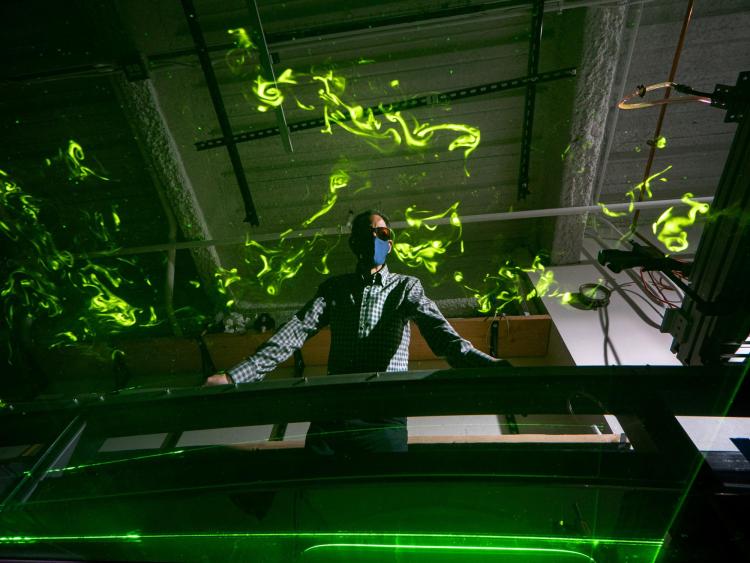CU Boulder awarded $613.9 million for high-impact research in 2020

John Crimaldi in his lab at CU Boulder. (Credit: Glenn Asakawa, CU Boulder)
CU Boulder research attracted $613.9 million in funding in fiscal year 2020 for groundbreaking studies that, among other things, crack the code of the teenage brain, advance electric transportation and aim to understand how odors guide behavior.
CU Boulder obtained grants from a range of government agencies, non-profit organizations and industry partners. NASA, National Science Foundation (NSF), Department of Commerce, National Institutes of Health (NIH) and the Department of Defense continue to be the largest federal funding sources for CU Boulder awards.
“This remarkable accomplishment is a credit to the exceptional researchers at CU Boulder including our faculty, researchers, staff and students who work tirelessly to advance their fields for the betterment of society,” said Terri Fiez, vice chancellor for Research and Innovation. “It is their ingenuity, hard work and dedication that leads to so many new discoveries, programs, understandings and innovations that positively impact humanity.”
Together, the CU system’s four Colorado campuses obtained $1.4 billion in awards, the fourth year in a row these totals climbed above $1 billion and represent an increase over last year.
“The research funding our prolific faculty bring in has a tremendous economic ripple effect on our state, but more important, it allows them to continue their excellent work addressing some of society’s most pressing issues in energy, health care, climate change, space, cybersecurity and more,” said CU President Mark Kennedy.
Examples of recent sponsored research projects at CU Boulder include:
Unraveling mysteries of the teen brain
How do screen time, drug use, exposure to environmental toxins or concussions impact the development of an adolescent’s brain? What role do genes play in influencing its size, structure and function? Why, neurologically speaking, do teenagers do the crazy things they do? These are among the previously unanswerable questions CU Boulder researchers are unraveling with a seven-year, $11 million grant renewal from the National Institutes of Health. The funding supports the continuation of the landmark Adolescent Brain Cognitive Development (ABCD) study, launched in 2015 as the largest long-term study of brain development and child health ever conducted in the United States. Read more about the brain research.
Electrifying transportation
ASPIRE—Advancing Sustainability through Powered Infrastructure for Roadway Electrification—explores a diverse range of transportation questions, from electrified highways that energize vehicles to the placement of charging stations, data security and workforce development. The center is funded by a $26 million National Science Foundation (NSF) grant. ASPIRE’s work will be based on research, education and workforce development, diversity and culture of inclusion, and innovation—and aims to improve health and quality of life for everyone by catalyzing sustainable and equitable electrification across the transportation industries. Read more about research on electrifying transportation.
Decoding odors
CU Boulder is leading a groundbreaking new international research network dubbed Odor2Action. The work is aimed at understanding how animals use information from odors in their environment to guide behavior, with far-ranging implications for our understanding of the human brain. The network is part of the Next Generation Networks for Neuroscience (NeuroNex) Program. Over the next five years, CU Boulder is leading 16 scientists from 16 prestigious institutions around the world to better understand the brain and its evolution by reverse-engineering how it interprets odors. The project is funded by a $20.2 million award from the National Science Foundation, the Canadian Institutes of Health Research and the UK Research and Innovation Medical Research Council. The network examines all the steps involved in how an odor stimulus gets encoded by the brain and then activates the motor circuits to produce a behavioral response in an animal. Read more on how the nose knows.


